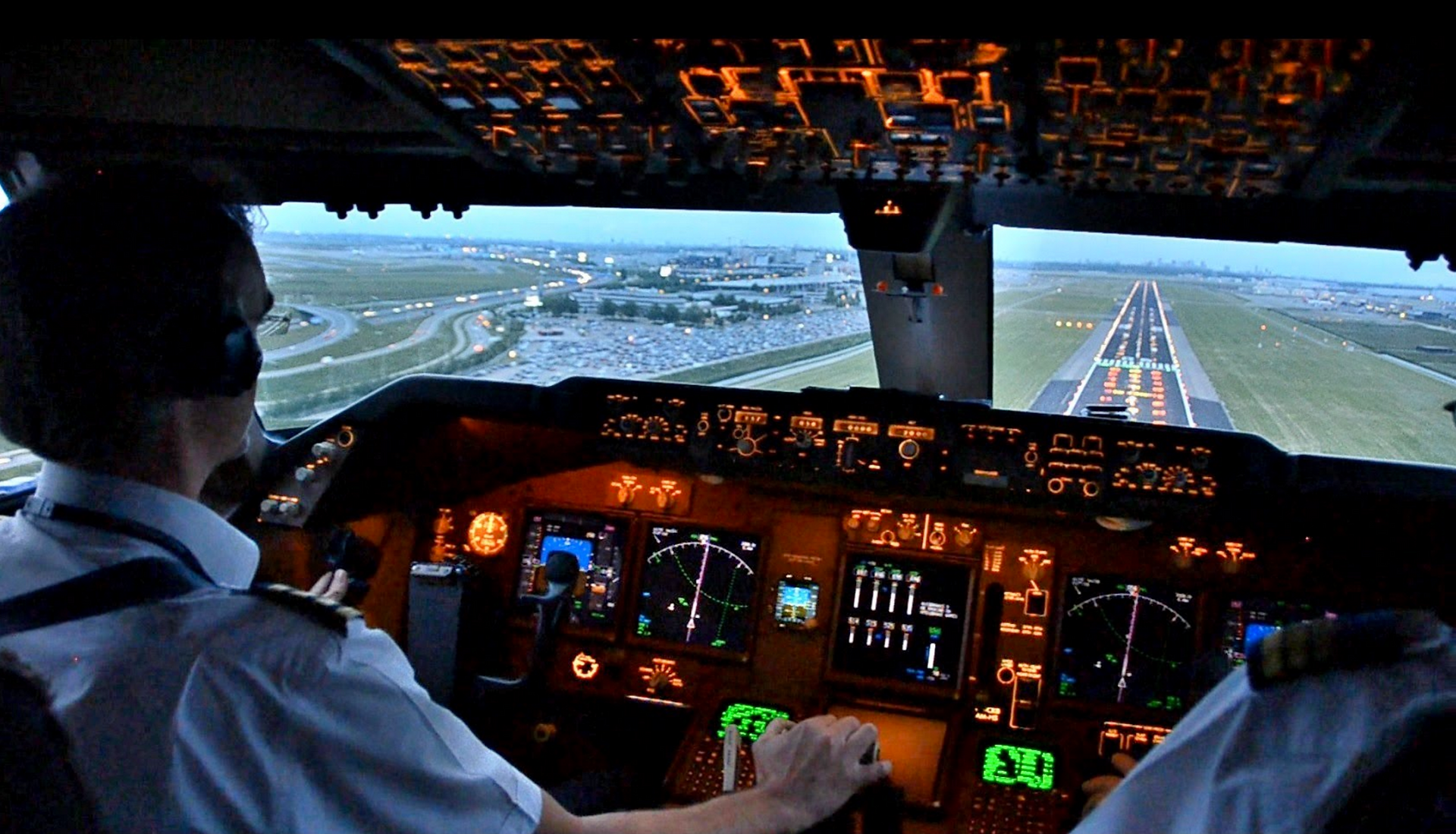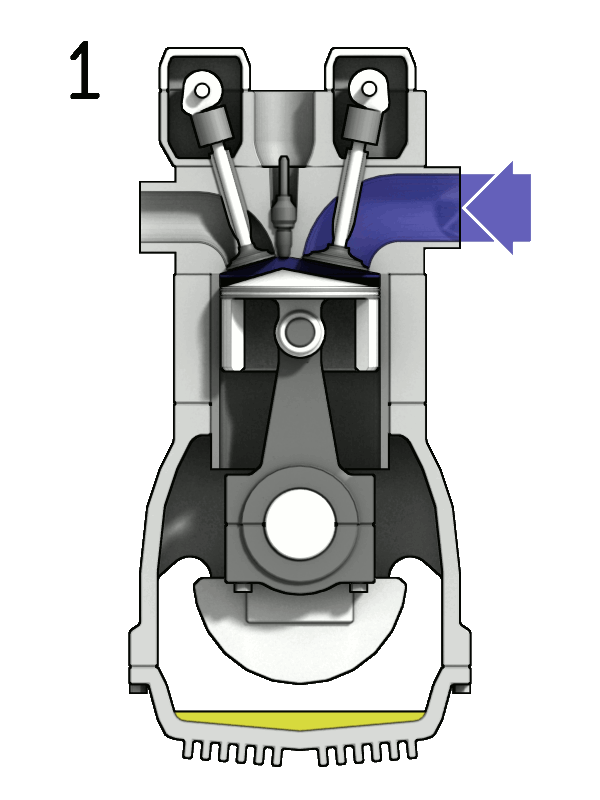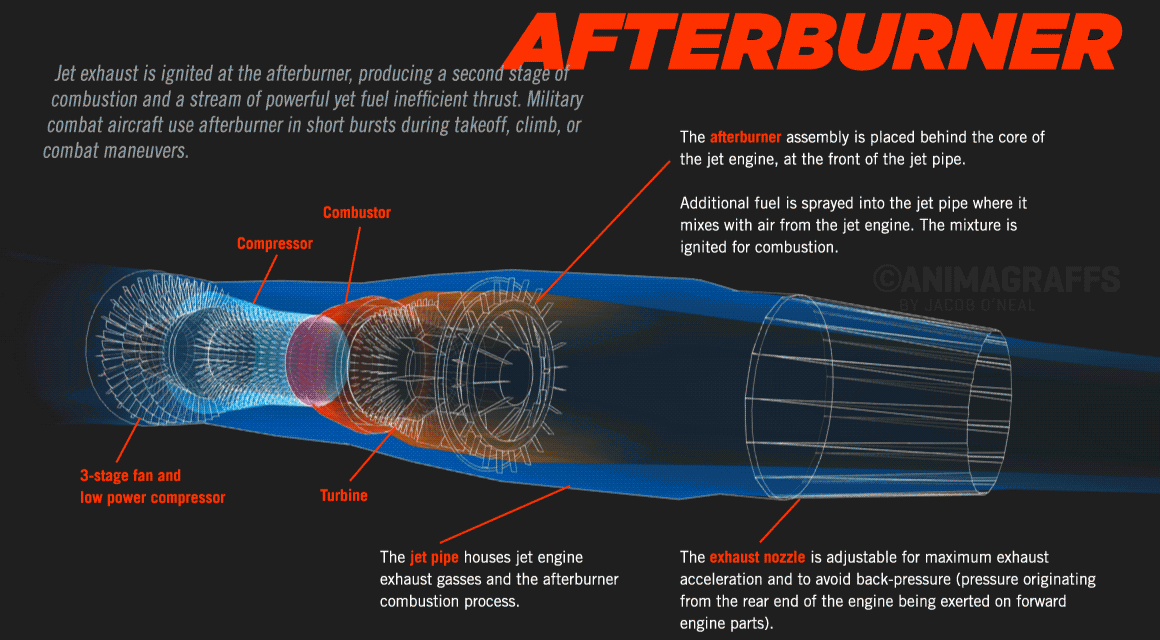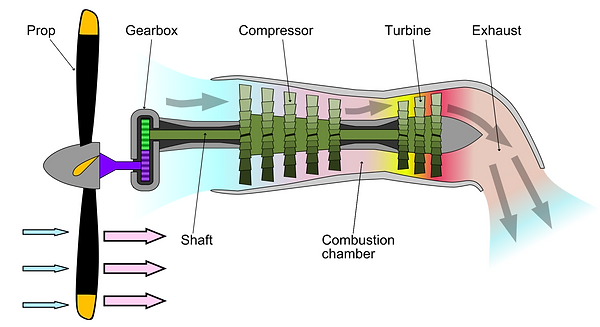
How the Engine Works





A jet engine is much less complicated than it seems.


Unlike a piston engine, a jet engine uses air to propel itself. Air is sucked in through the compressor, which is made of fans with blades. The air is compressed while the blades slice through it. This compression heats the air. Then, the air goes into the combustor where it is mixed with fuel and ignited. To start the engine, a spark is used to ignite the mixture of air and fuel. Once the engine is going, then the combustor is hot enough to ignite the fuel from the previous ignition. The heated air expands and forcefully exits the combustor, and goes through the turbine. The turbine is connected to the compressor and helps to turn it. Then, the air is directed through the nozzle for maximum thrust. On some jet engines, there is an extra step. For supersonic or war aircrafts, there is an afterburner which mixes the air with more fuel and is ignited for a second combustion. That is why on supersonic or war planes, it looks like fire is going out of the back.
There are three main types of aircraft engines; piston, or reciprocating engines, jet airplane engines, and turboprop aircraft engines. The first aircraft were built with piston engines. Piston engines work in a four stroke cycle. The cylinder is where the combustion takes place. The first step is the intake, which is when a highly flammable gas enters the cylinder. Then, the piston, which is a rod in the cylinder, goes up and tightly compresses the air. After that, a spark ignites the gas and it explodes, pushing the piston down again. Then, a plug that blocks air from coming out, opens and lets out the exhaust through a pipe.
As seen in the picture below, there are multiple (usually 4) cylinders in a piston engine. When one goes down, it pulls another one up.